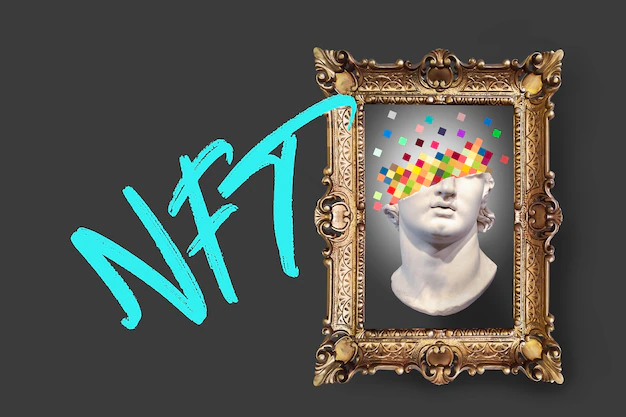At its core, an NFT (Non-Fungible Token) is a digital asset that represents ownership or proof of authenticity of a unique item or piece of content, often an artwork, using blockchain technology.
Unlike cryptocurrencies such as Bitcoin, NFTs are not interchangeable; each NFT has a distinct digital signature, making it unique and non-fungible.
NFT art refers to digital artworks bought, sold, and traded as NFTs. These can range from digital paintings, animations, music, videos, and more. The art is usually digital, but the NFTs can also represent ownership of physical artwork.
How Does NFT Art Work?
- Creation and Minting: Artists create digital art and then “mint” these works as NFTs on various platforms or blockchains like Ethereum. Minting involves creating a new block, validating information, and recording the art as a transaction in the blockchain.
- Ownership and Authenticity: Once minted, the NFT’s metadata (including the artist’s signature, the artwork’s details, and ownership history) is securely stored in the blockchain. This ensures the authenticity and provenance of the artwork, making it easy to verify its originality and ownership.
- Buying and Selling: NFT art can be purchased on numerous online marketplaces. Transactions are usually made using cryptocurrencies. When an NFT is bought, the ownership is transferred to the buyer, and this transaction is recorded on the blockchain, providing a permanent record of the sale.
- Royalties: One of the revolutionary aspects of NFTs is the ability for artists to receive royalties automatically. Artists can program in a royalty system to receive a percentage of sales whenever their art is sold to a new owner.
Benefits of NFT Art
- Provenance and Authenticity: NFTs provide a secure and transparent way to prove the authenticity and ownership of artwork.
- Global Market Access: Artists can reach a global audience, and buyers can purchase from anywhere.
- Royalties: Artists can benefit financially from secondary sales of their work.
- Innovative Art Forms: NFTs have encouraged new digital art and creativity forms.
Criticisms and Challenges
- Environmental Concerns: The energy consumption of blockchain technology and NFT transactions has raised environmental concerns.
- Market Volatility: The NFT market can be volatile, with prices fluctuating dramatically.
- Copyright and Plagiarism Issues: There have been instances of art being tokenized without the creator’s permission.
Future of NFT Art
The world of NFT art is still in its infancy, and its potential is vast. As technology evolves and more artists and collectors embrace NFTs, we may see new forms of art, innovative uses, and solutions to current challenges. Despite the controversies and growing pains, NFT art is paving the way for a new digital creativity and ownership era.
NFT art represents a significant shift in how we perceive and handle digital ownership and art. By leveraging blockchain technology, NFTs provide a secure and transparent method to buy, sell, and collect digital art.
While there are challenges to address, the NFT space’s potential for growth and innovation is immense, making it an exciting frontier in the art world. As with any emerging technology, artists, collectors, and enthusiasts need to stay informed and engaged with the evolving landscape of NFT art.
Read Also:






















